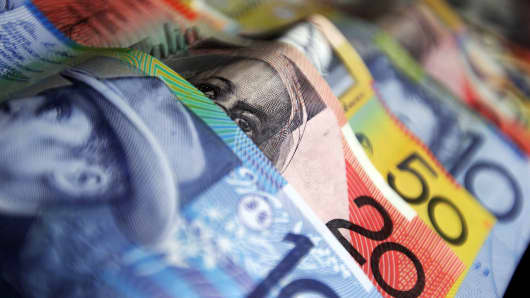Perhaps that doesn't look too dramatic given the Australian dollar's past performance: the currency has risen about 15 percent against the dollar over the last three years and is up some 60 percent from where it traded in early 2009 as the world emerged from the global financial crisis.
(Read More: You Just Can't Keep This Currency Down)
Another reason Series gave for his expectations of a stronger Australian dollar was that the monetary easing conducted by Australia's central bank has not been as deep as that conducted by other major central banks such as the U.S. Federal Reserve.
An ultra-easy monetary policy and interest rates near zero in the U.S. have put pressure on the greenback to weaken. And while the Reserve Bank of Australia has lowered interest rates 175 basis points since late 2011, its key rate of 3 percent is one of the highest among developed nations, helping underpin the appeal of the Aussie dollar.
Indeed, the relative difference in interest rates is often cited by analysts as a reason for the Australian currency's resilience.
(Read More: Australia Banks Slash Mortgage Rates)
David Greene, senior corporate foreign exchange dealer at Western Union Business Solutions in Sydney said it was difficult to predict where the Australian currency would be trading on a two to three year horizon.
"We're a short-term market looking for long-term trends so where's the Aussie going to be? In and around $1.03 short-term, and long-term, north of $1.06 is expensive," he said.




